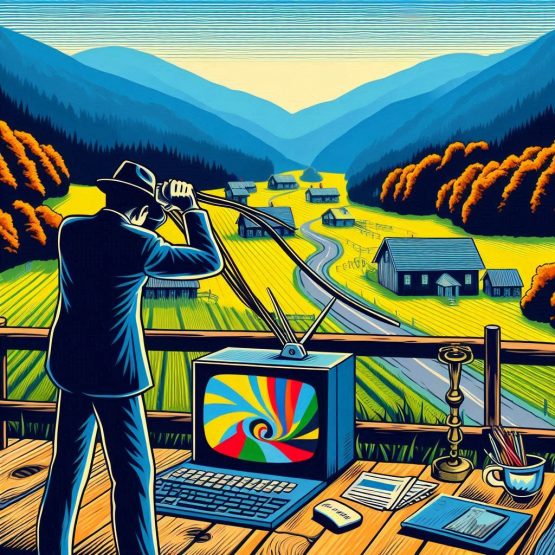By Darren Johnson
Campus News
Readers of my pieces, for the most part, are loyalists to print newspapers — as we all should be — but that also denotes we may be a demographic that likes traditional media.
While I don’t think subscribing to a $42/year newspaper is that big of an ask, other forms of traditional media can be quite expensive.
Early in the pandemic I cut Spectrum — I had been using them for cable TV, Internet and even phone.
My bill usually hovered close to $200 a month, unless I had some deal that maybe saved me $50. Let’s say average bill was $175 a month.
During the pandemic, the service wasn’t working — again — and I had to have some guy from there, traipsing through the house more than a couple of times. Wires, modems, cable boxes, routers.
Dealing with the company by phone was always a nightmare. Their Spectrum store in Wilton is a case study on how notto perform customer service.
Eventually, I’d had enough.
Some say it costs the same to cut the cord, as all of these a la carte streaming channels add up, but is that really true?
Let’s break it down:
- I got a $50 window antenna for local broadcast TV. Sometimes one of the dogs hits the antenna and I temporarily lose reception to a channel, so I’ll have to, say, watch CBS news as opposed to NBC news, but all of these news broadcast are all kind of the same. This was a one-time expense that will last many years, and you can find these antennas cheaper on eBay (mine’s a Mohu Leaf 50).
- In case you haven’t used an antenna this century, it’s all digital now. You will get a lot of channels crystal clear with one — and, again, free!
- I just use my cell phone instead of a landline (I’d only had the landline because occasionally I had to use a fax machine for newspaper stuff. But now everyone is good with scanning/emailing docs).
- For Internet, Verizon offered me a 5G cube. You can stop by the Verizon Store — which is much friendlier than the Spectrum Store — and see if your address qualifies. I’m near the Hudson and close to a Verizon signal, so it works for me. As I was already a Verizon customer, this only adds about $40 to my monthly family plan bill. (I’m sure AT&T, T-Mobile and others also have similar cubes.) The Internet provided via my cube is excellent — and I’m a big streamer. And no routers, wires, etc.! And no service calls — if it stops working, I can just go get another, for free!
- Channels: If you like those basic cable channels, like A&E, History and Lifetime, you could get Frndly TV for only $6.99/mo. They also have a DVR feature for a buck or two more. I no longer care for these channels, but a lot of people do like them. Shows from those channels, though, do show up on other streaming services, so you can also find them there.
- You will need to either have a smart TV (which aren’t expensive anymore) or hook up something like a Roku Express stick to your TV. These may be a one-time expense of $30 or so. The Roku remote is exceedingly simple. There are buttons on it that say “Netflix,” “Hulu,” “Amazon,” etc.
- Also, it’s important to note, once you have a smart TV or something like Roku, you now can get lots of free movies and channels.
- Your local or college library probably allows you lots of free movies via an app called Kanopy. Just search for it on your smart TV/stick and download, then input your library info.
- Sports — major ones come over the antenna for free, and streaming services like Amazon’s (which you get for free if you are a Prime member) often carry big games.
- You can also broadcast tons of free YouTube shows to your TV from your smartphone. I watch an independent show regularly that way.
- Streaming channels: I feel that Netflix is a must-have. There’s just so much on it and the original programming is decent. Hulu is good. Max (formerly HBO) has some good quality — they know how to curate the best shows — and is worth it; especially their lower-priced plan at about $10. I may add on a Peacock or Paramount if they have a hot series. Those usually run about $5 a month. So let’s say the above is $40/month, if you’re allowing that Amazon is “free” because of all of the free shipping you get being a Prime member.
OK, so what’s the monthly cost? $40 for the Internet cube, $40 for the premium streaming channels, maybe, say, $5 for the occasional add-on, and the hardware costs are negligible. So I think it’s fair to say my cost for TV/Internet is $85 a month.
Plus, when I had cable, I was paying for movie rentals and Netflix anyway, so my total bill then was definitely closer to $200 a month.
And no wires, routers, rude service people or service calls.
So go cut your cord — you’ll have to go to that purgatory known as the Spectrum Store to return your hardware, but, after that, you’re done!








Facebook Comments